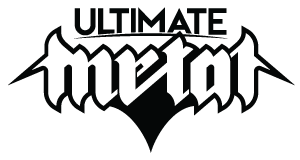So...
I've done lots of thinking on how to approach designing a song or album, in terms of musical psychology. Instead of just venting out what comes naturally (or playing random shit and salvaging the cherries) I wanted to come up with some system. Because going full spontaneous just tends to end up with describing your current mood in life. Good maybe if you're angry and depressed and you want to create angry and depressed metal. But it tends to spawn mishmash songs where ideas don't really unite in best way. I realized this when I made my first few songs. They were too similar even tho they had different sections obviously. I think you're not supposed to have every element in one song.
First I figured I need to decide the mood and style of the album itself. Let's say melancholic and medium-fast. This sets rough limits which serve as guidelines and prevent getting lost out of style. Some things can change from song to song, section to section, but for the album composing and recording there's standard sounds. Then I pondered a pattern what makes an album have certain mood, such as melancholy. The guitar tone is most important as it will be set in stone. I formed a rough pattern of moods and guitar tones and marked X where I thought a certain tone and atmosphere fit together.
MOODS: ______Haunting – Melancholy – Malevolence – Anger – Mystery – Sorrow – Doom
TONES: Bright _____x_________x____________________________x_______ x ______x
_______Biting ________________x___________x_________x_____________________x
_______Crisp ________________x___________x________________x_______x______
_______Crunch __________________________x_________x______________________x
_______Dark _______x________x___________x_________x_______x_______x______x
_______Open _____________________________________________x_______x______x
_______Punchy ____________________________________x______________x______x
_______Smooth ____x_________x____________________________x________x______x
_______Warm _____x_________x_____________________x______________x_______x
_______Muddy ____x_________x______________________x_______x______________x
_______Hollow _____x_______________________________x______x________x______
I then chose to have a certain tone that fits the idea of mood I want. The purpose of all this is to find a logical path to steer when selecting elements for a song you want to create, ensuring you can have different songs on the album instead of every song being clone. Some elements don't go together, and even tho this should be intuitive for an artist, you sometimes aren't sure what mood you're chasing in your song.
Then I started thinking how to approach designing a song. I made similar diagram for feelings of melody when it comes to speed.
EMOTION: ________ Haunting – Melancholy – Malevolence – Anger – Mystery – Sorrow – Doom
SPEED:
_______Very slow ______x_____________________________________________________x
_______Slow __________x_________x____________________x_______x_______x______x
_______Medium _____________________________x________________x_______________x
_______Fast __________x_________x___________x_________x______x________x_______
_______Very fast _________________x__________x__________x______________x_______
You could make such diagrams with many things. Such as: which atmospheres can co-exist? But there is a limit to making etheric art to a mathematical formula.
Then I made a diagram of drum speed emotion when it comes to emotion created by drums. With drums the emotions created are different. I believe drumming is primitively linked to human heartbeat in conjunction with emotion. (I neglected emotions that aren't black metal, such as euphory.)
EMOTION: ___________Sad_______Depressed____Angry____Fearful______Vicious
SPEED:
_______Very slow ______x_____________x___________________x____________
_______Slow __________x_____________x_________x____________________x
_______Medium _______x_______________________x_____________________x
_______Fast __________x_______________________x_________x___________x
_______Very fast ______x________________________x_________x__________x
I tried thinking the correct order in which to decide on these things, because each decision sets boundaries.
1) Choose a desired atmosphere and a desired feeling/emotion for it. For example sad & mysterious, or sad & doomy (you can have different aspects for certain mood.)
2) Choose a fitting 'drum speed.'
3) Choose a fitting 'guitar speed.'
4) If you have a twist of emotions in a song, decide if you want different instruments to create different emotions, or the same ones. Such as 'sad drums' and 'doomy guitars', or 'doomy drums' and 'sad guitars.' I have my theory how rhythm guitar, bass and synths operate in psychology, but I'll leave that out here, it gets embarrassingly deep. But that is when you really create layers of dimension to a song. A song is a story told in energy waves: what happens, in what kind of place, how it makes you feel physically, how it makes you feel mentally, and how it changes your fate. With five instruments you can tell that a person get lost in a cold forest and is hurting and is worried and can no longer take life for given.
These together create the colour and character of a song. With lyrics you can elaborate on the theme. I like to think of the task of true creativity as making two feelings meet in a song. This creates a magical depth.
These formulas purposefully neglect "style of playing" and "composion ideas." They just serve a foundation, helping to dictate song ideas and sections of a song (varying speeds and moods.) Creativity of selecting notes is up to the artist. This way we don't end up with a million useless songs with I-IV-V chord progressions...

